|
On Monday August 19, 2019, I swam the Tsugaru Strait in 10 hours, 11 minutes. This body of water separates Honshu, the main island of Japan, from the island of Hokkaido, to the north. It connects the Sea of Japan on the west side with the Pacific Ocean to the east. The water temperature was a warm 73f/23c degrees, the skies were mostly clear, and my encounters with marine life was minimal. This swim was challenging due to the 4-5 foot (1.2-1.5 meters) seas that prevailed that day for the last 7 hours of the swim and the strong eastward currents at the finish. That’s the short story so feel free to stop reading now. Japan is a lovely country and I enjoyed my time there. However, the language – both spoken and written- is so so foreign to me that this trip would have been much more difficult for me if Ted Baumgartner had not been involved for the entire year leading up to the swim, and then during our time in Japan. Ted is completely bilingual. He grew up in Detroit, Michigan and graduated from the University of Michigan. After college, he lived and worked in Tokyo, where he met his wife, Akiko Tateno. Her parents and siblings still live in Tokyo. Ted and Akiko have three smart, charismatic, bilingual children. I met Ted through swimming in suburban Chicago. We are both part of North Shore Masters Swim Club, Ted as a swimmer and me as the Head Coach. Ted was so much more than a translator and correspondent. He was in charge of essential communications, starting off with telling me how to pronounce the name of the Strait correctly: sue-GAR-ru. Ted also assisted me with straightening out cultural nuances that I regularly bent and explaining what was going on amidst the swirl of the Japanese scene. To boot, we swim at the same speed so Ted was able to pace me for the final hour of this swim, allowing us to savor a few moments on the rock where we finished on Hokkaido. For all of this, I dedicate my Tsugaru Strait swim to you, Ted. Thank you for making this a success in so many ways! My physical preparation for Tsugaru began in Fall 2018. I started swimming with a group that focused mostly on sprinting which has helped me to reclaim some of my speed lost over the past few years. Combined with my distance base, I was solid and strong at the end. On December 31, 2018, I swam the 24-mile length of Tampa Bay in Florida. After recovering from that swim, my mental preparation for this swim began in earnest in February. This subtle focus in my approach is nearly undetectable – I simply start to research, read, and think a lot about a particular swim, and what it will be like to be doing it. I am only immersed in one swim at a time. With so many swims out there, trying to mentally multi-task is distracting and counter-productive for me. I first considered swimming the Tsugaru Strait in 2017 and submitted an application. It took me a while to get my head around it because it was so foreign to me. How was I going to communicate? In August 2018, I approached Ted about joining me on this swim. He was all in! He put so much effort into the entire event: communicating with Ocean Navi, making sure my application was correctly submitted, figuring out where to swim in Tokyo, making many of the travel reservations, and so much more. His in-laws, Sadakazu Tateno (“Otoosan”), Kazuko Tateno (“Okaasan”), and Sawako Kanemitsu (“Sawa”) helped out in many ways I’ll never know fully, making this an international team effort! My thanks and appreciation towards all of them is heart-felt and sincere. THANK YOU! I still had zillions of questions: Would the people be nice? Would they walk on their heads? Would the mountains be really steep? Would the water be super wavy? Would the currents be very strong at the end? Would the water be filled with marine life? How was the movie going to end???? Japanese people ARE very nice and polite. They walk just like the rest of us. The mountains on the Honshu side ARE very steep. The cliffs fall off abruptly from the top of Hotel Tappi, where we stayed. The water WAS super wavy, 4 to 5-foot seas (1.2-1.5 meters), during our swim but these conditions were exceptional. The currents WERE strong at the end but I was strong enough to keep up. The only marine life I saw was one 2-foot (0.6 meter) tube-shaped fish at about 2 o’clock in the morning. He approached me from the left side near the surface, wondering what I was doing there, swam in front of me, saw the boat and retraced his steps, quickly departing off to the left, just as perplexed. I saw a few jellyfish but they were small and not threatening. I got one sting, on my right ear early on, and it was a non-event. All said, the Tsugaru Strait is far away from my western life, in a remote corner of the world that was its own trek to get to. I left Chicago on Sunday morning August 11th, arriving in Tokyo on Monday August 12th around 4pm local time. Ted found me at Narita soon after I emerged from Customs and we wound our beluggaged selves to his in-laws’ home through a series of trains and subways. Having lived in New York for a while, the subways didn’t feel overly crowded nor did they intimidate me – I simply couldn’t read the signs so I was wholly dependent on Ted. Over the next few days, we adapted to the time change and got around like the locals do: we did a lot of walking and train riding. I encountered some esoteric things in Tokyo like Pizza Danish sold at Starbucks, lots of people wearing medical masks, and the notion that many Japanese people “Style Hard”. These variations to my everyday life humored me, making me appreciate the differences offered in large, urban populations. On Tuesday, we swam with the Ocean Navi group and visited the Edo Museum. I also got my first taste of Tokyo’s out-of-control summer heat and humidity. It was 90f/32c with 85% humidity! (And they’re having the Olympics here next summer??? Running a marathon in this weather??? Doing any sort of outdoor activity??? Not only will the athletes melt, the spectators may be greatly impaired by the weather.) On Wednesday, we swam in the Olympic Pool that will be used in 2020, then we ate lunch at a swanky department store in central Tokyo so I could see how it compared to those in other large cities: It was right on par. On Thursday, we swam in the practice pool the US Olympic Team will use next year, located in the Setagaya section of Tokyo. Then it was time to venture north to the Aomori Prefecture (state) via the Shinkansen train. Once we got off this high-speed train, Ted rented a car - because he could - and we drove north over winding mountainous roads for 2 hours to the Hotel Tappi. The whole trip from Tokyo to Tappi took about 7 hours. Our rooms in the hotel overlooked the Tsugaru Strait. When I woke up the next morning and could clearly see across to Hokkaido, this swim was starting to look promising. Ted’s sister-in-law, Sawa, made the hotel reservations and told us there would be a Croatian group at the hotel at the same time. At breakfast on Friday morning, the hotel seated all of us “Westerners” together. Before they arrived, I told Ted, “We have to introduce ourselves.” Three Croatians walked in and seated themselves; we were trying to figure out which one was the swimmer. Then 23-year-old Dina Levačić bounced in. Clearly, she was The Swimmer. (Her parents, Mladen and Željana, and a family friend, Mladen Milosevic, were accompanying her.) We all struck up a quick fondness for one another and Ted’s language skills proved incredibly helpful for Dina’s group too. Over the next few days, sharing many meals with the Croatians, we thoroughly enjoyed their company and learning about their viewpoints of their own country and their neighboring countries. English is compulsory in Croatian schools so we could all understand one another. Dina wanted to eat “Western Food” and Ted was instrumental in helping her order off the menu. After breakfast, we all walked down the stairs to Tappi Port, 200 meters from the top of the hill, in search of somewhere to swim. These stairs are actually part of the National Highway 339. It didn’t take us long to realize we were in the wrong place so we got to walk back up all 387 stairs to the top, past the monument wailing out the Japanese Country Music (“Enka”) song Tsugaru Kaikyo Fuyugeshiki (The Winter Scenery of the Tsugaru Strait). The lyrics were carved in stone on the monument with a PA hookup that played the song every time a tourist pressed the red button. The song is about a woman who is leaving her lover in Tokyo and crossing the Tsugaru Strait on a ferry on her way home in Hokkaido. (More info is available about this song at the end of this writeup, courtesy of Ted.) Then we walked down the hill to the west side of the Tappi Peninsula to where there was a swimming spot inside the breakwall. The water was ebbing towards low tide and the swim area looked a little dubious. I wasn’t interested in taking chances at this point. Since we had a car, Ted, Dina, her father Mladen, and I, drove the 15 minutes to Yoshitsune Seaside Park (64 Minmayanakahama, 030-1728, Japan) where we were able to swim comfortably in a 200-meter contained area. Nora had told me about this place and it became our training site, complete with an outside hose for rinsing off afterwards. Ted and I could tell that Dina was faster than us and we would find out shortly just how much so. On Friday afternoon, a ferocious Typhoon swept through the area, in stark contrast to the tranquility we had been experiencing just a few hours earlier. The rain came down sideways. It took about 18 hours for the storm to blow through then it was clear again. Fortunately, we were able to swim at Yoshitsune Park on Saturday morning since it stood in the lee of the storm and was protected by a breakwall. That afternoon, we took a drive to the grocery and hardware stores to get supplies for our swims. I got all my swim gear organized and went over it with Ted before dinner. On Sunday morning, there was a strong possibility that we would go the following day so everyone rested. I reviewed my feeding plan with Ted then we visited the Shinkansen Tunnel Museum near the hotel. As Ted and I were about to descend on the cable car from the surface to the actual Tunnel, Dina sent me a message that her boat captain said she was definitely swimming tomorrow and she was to meet him at the boat at 10pm tonight. My stomach dropped and I was thinking about getting off the cable car and going back to the hotel. Why was I sightseeing when I was most likely going to begin my swim in less than 12 hours? (It was only a 40-minute tour; I was ok.) Ted and I then drove 40 minutes over switchback roads with steep drop offs to Kodomari to have our pre-swim meeting and meet the boat captain, Captain Kawaue, and Mika Kume, the official Observer. We found the boat, Umi no Maru, on the far western side of the Kodomari Marina so it was a good thing to go early during the daylight hours and find our launch spot. In 13 minutes, all was resolved: We would meet at the boat tonight at 11pm and I would begin around midnight. I wasn’t particularly nervous, just ready to get going. It was during this time at the Marina that I took a moment to unite water from Lake Michigan with that of the Tsugaru Strait. I also tossed a few pebbles and pieces of sea glass from home into the water. Afterwards, I took some water and pebbles from Tsugaru and introduced them into Lake Michigan when I returned home. I even gave Dina a few pieces of my Chicago sea glass and told her to put them in the water where she swims in Split, Croatia. These simple acts keep our open water community globally connected. When we got back to the hotel, Ted’s 23-year-old son, Max had arrived, after being delayed a day by the typhoon. Max lives and works in Hiroshima and would be part of my crew. His bilingual skills were immensely helpful. We all had a light dinner at 5:30pm on Sunday and I was lying down by 6:15pm. We left the lobby at 10:10pm. I don’t think I really “slept” but I did rest the best I could and was ready to go when my alarm went off at 9:57pm. We again drove the steep switchbacks to the Marina, this time in the dark. When we arrived at the boat just before 11pm, we loaded up our supplies and cast off, heading towards the starting point. I felt fine. While the boat motored to the starting point, I put water in my cap to cement my hair down then put my cap on. I stripped off my clothes and stood in my bathing suit so Ted and Max could apply sunscreen over my body with rubber gloves. They followed this up with Desitin to a few chaff points - around my neck and on my left bicep. We took a moment to review all that I needed to do before the start, then I was ready to go. The observer told me to get in the water so I mounted the ladder, stepped down the few rungs to the water, swam to the start, gave the signal, and we were off! My swim of the Tsugaru Strait began precisely at 11:48 pm on Sunday August 18, 2019. I swam strongly and confidently, without fear or apprehension. This was a first for me. Usually, I’m a mess for the first several minutes: Either I’m panicking for a number of reasons, or fiddling with my equipment, or the boat is in the wrong place, or some other excuse is playing out to deter my progress. I was actually enjoying this start, stroking smoothly towards Hokkaido at the comfortable pace of 70 strokes a minute. This past spring, I heard the expression Love Yourself more than you Love Your Drama. Thinking about this expression during this swim, it was easy to just keep swimming. Liz told me she loved the water in Japan. I could now see why: it’s so crystal clear. Even through this pitch-black night, I could clearly see the outline of the boat underwater. A 10-foot “Shark Shield” in the form of a long blue ribbon extended underwater from the front of the boat alongside the hull and I literally swam above this ribbon for nearly all of my swim; it was like following the black line on the bottom of a pool. I was right back in Centennial! Ted told me afterwards the boat radar was picking up many “large fish” below the boat and “larger fish” below them at the start of my swim. This part of the world has an abundance of black tuna and “larger fish” with big, sharp teeth who are sometimes featured as villains in ocean movies also like the taste of this tuna. Both boats turned on enough lights to light up a carnival, so all the fish stayed well below the surface and the Shark Shield did its job. [If there is ever a question of whether I would get out of the water due to marine life, I have 3 very good reasons to do so: Mark, Julia, Sam.] The lights blazed at me but I didn’t complain since I could see Ted and Max, and they were all I needed to see. In contrast, the surrounding land was completely dark, like it is in Lake Tahoe, so I didn’t know if Dina was in the water. When I finally asked, at the 4 ½ hour feed, they said she had started about 8 minutes after me and “Yes, she’s doing great, like you.” I was so glad she was still in, battling these waves. If she had gotten out, I would have felt like I was just dropped off at the last train station in Siberia on December 1st with my one suitcase and wearing leather shoes. It really boosted my spirits that we were in this together. At dinner on Sunday, her Dad said, “Let’s all have good swims today.” It was nice for him to say this, that everyone do the best they can to be successful, not just one individual. A major lesson I’ve learned over many years in Open Water Swimming: Support One Another. The water was comfortable and easy for the first few hours. I wasn’t freaked out swimming in the dark or worrying about what was under me. The water was warm even though it was supposed to get cold at the end (It didn’t.) I was doing my job: To Swim. A few hours into it, the waves started to pick up. Even though it was so dark that I couldn’t tell where we were, I thought by the wave action we had probably cleared the peninsula and were out in the Strait now. Before we started, Captain Kawaue said the water may be rough in the middle but it usually calms down near the coast. Like the water temperature, this would also not be the case today. I just dealt with the circumstances I had been offered, one stroke at a time. The observer, who had been on many previous crossings, was seasick for much of my swim. She was kind enough to puke over the opposite side of the boat so I never knew. Ted compassionately offered her my mouthwash to rinse out her mouth. Gotta support one another… I started chanting “Grateful, Gratitude, Grit”, alternating with my usual “Mark, Julia, Sam” cadence. I am so grateful to be able to swim and I felt a great deal of gratitude for being in the Tsugaru Strait at this moment. I knew if I was going to complete this swim, it would take grit. “Grateful, Gratitude, Grit” on and on and on, moving forward towards Hokkaido. When I swam the English Channel in 1994 at the age of 30, I found an inspiring quote that came back to me in the middle of this dark sea, when the waves were picking up and we were no where close to done. Ask not for victory alone, ask for courage. For if you can endure, you bring honor to yourself. Even more, you bring honor to us all. I knew people were watching me on Facebook and on our Tracker because of the messages Ted was relaying to me on the grease board throughout this swim. These messages helped me to crank on at a rate of 70 strokes per minute. Yes, you have to be in good physical shape for this type of a swim. Equally important though is the ability to get one’s mind in shape. At this moment, both of these aspects were working in my favor. I was in my element and making it happen. From Australia, Shelley told me: “Bubble, Bubble, Breathe!” Marcy said from Connecticut: “I’m watching you!!!” Nora and Liz cheered me on from the UK. There were so many “GOOOOOO MARCIA!s” delivered from all over the globe. I knew I was surrounded by love and support, working my best to “…bring honor to us all.” Ted was amazing in his role as crew chief. He realized how much there is to do, as he explains, “I would do the feeding, then it would take about 12 minutes to prepare the next one, then I would write a little bit on social media and in the log, then watch you swim for a few minutes, then it was time for the next feeding.” The song, Raindrops Keep Falling on my Head randomly popped into my head when it was dark and the waves were rolling. It’s a pleasant, innocuous song that was originally the movie soundtrack to Butch Cassidy and the Sundance Kid in 1969. You often hear it in elevators, Doctors’ Offices, and movie soundtracks. The lyrics, included below, mirror my mental state throughout this swim. (Raindrops stands in stark contrast to the tune that randomly came into my head in the North Channel last summer, Billy Joel’s No Man’s Land.) It’s an interesting psychological ploy that this song distinguished itself from all the other songs rolling around in my head at a time when I needed to endure without complaint. Raindrops Keep Falling On My Head by B. J. Thomas, 1969 Raindrops are falling on my head And just like the guy whose feet are too big for his bed Nothing seems to fit Those raindrops are falling on my head, they keep falling So I just did me some talking to the sun And I said I didn't like the way he got things done Sleeping on the job Those raindrops are falling on my head, they keep falling But there's one thing I know The blues they send to meet me Won't defeat me, it won't be long Till happiness steps up to greet me Raindrops keep falling on my head But that doesn't mean my eyes will soon be turning red Crying's not for me 'Cause I'm never gonna stop the rain by complaining Because I'm free Nothing's worrying me It won't be long till happiness steps up to greet me Raindrops keep falling on my head But that doesn't mean my eyes will soon be turning red Crying's not for me 'Cause I'm never gonna stop the rain by complaining Because I'm free Nothing's worrying me. Source: LyricFind, Songwriters: Burt Bacharach/Hal David, Lyrics © Warner Chappell Music, Inc, The Royalty Network Inc., BMG Rights Management My feeds were fast, under a minute, and I was able to ingest the 8 ounces (240 ml) per feeding Ted prepared. The bottles I was using, Contigo Jackson, 24 ounce size, were clipped by a carabiner to a rope and thrown from the boat. The other end of the rope was clipped to the boat. I flipped the top open easily and the opening was large enough that I could chug fast. The only issue was I was probably ingesting too much sugar and too many calories at each feeding. My first feed came at an hour, then every 30 minutes thereafter. The first two feeds consisted of a mix of 1 packet of Hammer Perpetuem (Orange Vanilla), 8 ounces of water (236 ml), and 1 vanilla Hammer Gel. The third feed was the same but comprised of Strawberry Perpetuem and 1 Tablespoon (15ml) of Agave. These mixes were alternated every fourth feeding with 7 ounces (207 ml) water with 1 scoop of GNC Whey Protein plus a few cherry cola Honey Stingers. Every feed ended with a quick rinse of mint mouthwash, to keep my mouth from swelling from the salt water. The sun started to come up around 4:30am, officially rising at 4:50am, an energizing point in any swim. However, I started burping around 5am and I could feel my stroke count dropping into the low 60s. I had never gotten sick in a swim before but 6 hours and 18 minutes into this swim, I vomited up everything, as if my stomach had been connected to a fire hose. I had no idea this was coming and I gave Mr. Creosote, the guy in Monty Python’s The Meaning of Life, a real run for his money. Ted was at the stern but he heard me blowing my guts out and immediately came to me at the side of the boat to catch the finale of this fine performance. I told him at the next feed I wanted Lipton’s Cold Brew Tea with Agave, a dinner roll broken up into little pieces, and water. Thank God we had discussed and provisioned for Plan B (& C & D) because it’s what got me across the finish line. Once I started swimming again, I was concerned but I also felt much, much better. I wasn’t sure how much I had lost but we were about to start over again. I just kept swimming. Once stroke at a time. When the next feed came, just like requested, it went down and stayed down. My feeds from here on would take a little longer, over a minute due to chewing the pieces of roll, but they fueled me well. Ted told me later: “Captain Kawaue and the first mate were impressed and remarked to us, "Nice Fight". In Japanese it's pronounced "Naisu Fuaitto". It was a tribute to your mental toughness – your ability to rally after vomiting, persevere and remain focused on your goal. This is the type of "fighting spirit" to which Japanese martial artists aspire.” Language is oh-so-important in our lives. Positive, negative, and violent language usually reflects our inner frame of mind and self-perception. During this swim my language was almost always positive, “Awesome!” “I’m doing great!” with only a few slips such as “This is really tough.” Ted told me a few times, “It was going to get calmer or easier in the next X minutes,” but no such luck. After I realized that it wasn’t going to get any calmer, I asked him at a feeding “When was it going to start to get really rough?” He laughed! At the end of every feeding, I’d simply think, “Just swim to the next feed.” Around this time, Ted told me that Dina was close to the finishing, then shortly thereafter, followed up that she had finished in 7 hours, 13 minutes, a new woman’s solo world record. I was so happy for her, especially in these seas, and sensed then that I too was going to make it if I just kept going. I tried not to look up too often because – like usual - the land doesn’t seem to get any closer when I do. Also, with the waves, it was hard to time it so I would actually see something other than water, so I just kept swimming. At the 9 hour feeding, Ted said, “This is your last feed. We’ll be there soon.” Fine by me! I asked him to swim in with me to the finish and expected he’d get in with about 15 minutes to go. I said, “It’s really rough in here so there’s no sense for you to get in before the very end.” Once he had put the feed bottles away, he got a message from Lee on Marcia's Facebook page (on which he was guest posting), "Get in the water, Ted", which is pronounced in Lee's Tennessean as "Git in the water Te-ya-d". Before I knew it, Ted was perched over the side in his suit and goggles, waiting for the official word from the Observer to enter the water. He joined me and we powered towards the shore. We had practiced pacing in Lake Michigan this summer; I was able to stay with him as a result of my solid distance base and sprint work, thanks to Phil’s Phish. I loved Ted’s company. By now, I had caught a glimpse that the Lighthouse on Cape Shirakami was off to our right side, thus we were on the west side of the Hokkaido peninsula. If I continued moving forward at a similar pace, I would I would probably hit land but there were no guarantees. I put my head down and kept cranking. Ted and I were heading towards a beach straight ahead but the current was strong and pushed us gradually to the east. I decided to take 500 strokes before looking up again; this would put a major dent into the distance. It was also a good indicator of my mental state this late in the game to see if I could keep it together enough to count 500 strokes. We swam hard and I counted 1-2-3-breathe-1-2-breathe-1-2-3-breathe-1-2-breathe 50 times in a row. When I got to stroke #390, I saw the bottom about 40 feet below and I knew we’d make it. HUGE UNDERWATER SMILE! YES! I spotted boulders the size of big cars on the bottom; anything smaller would simply get whisked away in the current. Onwards towards the shore! A small jut of rocks was sticking out just east of the beach. Landing here would save us from being whisked into the small bay and resulting in another 5-7 minutes of swimming. I pointed out the rocks to Ted and we swam hard towards this landing spot, our arms feverishly churning towards completing this swim. Suddenly I hit the rock! I put my hand up high on its surface so the Observer could see I had made it since she was on the boat, bobbing in the swells about 100 yards offshore. Then Ted hit the rock too. YEA! Mother Nature had carved a bit of a natural staircase into it so we timed our exits carefully in order that the surf pounding forward into the rock along with the current sweeping eastward would help lift us onto the rock. I clutched on to what I could, then lunged forward and up onto the top of the rock. With my arms lifted in triumph, the Channel Gods had allowed me safe passage of the Tsugaru Strait today. A minute later, Ted joined me on this small bit of terra firma on the tip of Hokkaido. We high-fived and then sat down to enjoy the moment. Job well done! We looked to see if there was a pebble to take back as evidence of this feat but the only things on this rock were several snails and many sharp barnacles that cut us in numerous places. Unless it was nailed down or glued on, the current swept away all loose effects. Memories would have to suffice. The water was wild and we could see the boat rolling in the waves. It was easily a 10-foot (3+ meter) drop to the bottom from this rock. But if we wanted a ride back to Honshu on the boat, we needed to swim the 100 yards/meters or so to it through the raging current. So just as we did in landing, we carefully gaged the best time to leave this rock and swam back to the boat. I took my time. I had been hauling hard for the past 10 hours and now I could finally relax. I was also so happy everything had worked out. Asking Ted to be a part of this swim was an excellent decision. I also proved to myself that if I just kept swimming, I could make it. The boat ride back to Kodomari Marina took about 2 hours. Accommodations were sparse on the boat to say the least. We sat in the back of this steel-bottomed fishing trawler, holding on firmly to the sides in order not to get slammed around in the relentless wave action. I did a pretty awkward “Downward Dog” yoga position to get out of my suit, taking a solid 10-minutes to effectively execute my deck change. The only place to sit was on the uneven bottom of the boat – Thank God we bought the cushions! It was rough going and I realized I had just swum through those seas. Our swim was a success and everyone felt fine! We pulled into port around 12:15pm and unloaded the boat. The Official Observer, Mika Kume, gave me a certificate of completion of the Tsugaru Strait (That was fast!) and a special silicone bathing cap commemorating the swim. Ted received one too, as he should, since he played such a crucial role in this swim. We said our Thank Yous and Good Byes then drove back to Hotel Tappi. I started to feel the fatigue of the swim and closed my eyes on the drive. When we arrived back at the hotel around 1:30pm, I was tired but decided to sort out all the gear and wash off the sea water. Once I finished with the gear, I took a shower then lay down, expecting sleep to come quickly. Nope, not one wink. I was no longer tired at all. I decided to take a walk to the Shinkansen Tunnel Museum and pick up a few souvenirs for my family. By the time I returned to the hotel, dinner time was near. We had a fun celebration with Dina’s family and everyone was so happy for our collective success. Dina and my swims were respectively the 48th and 49th crossing of Tsugaru Strait. I’m so glad to have met Dina and her family. I wish them all the best in their journeys through life. Matthais Kassner (Kaßner) and his wife, Ina, joined us too. They were wonderful companions; it’s amazing how quickly bonds grown in this sport. Matthias told me at dinner how much he appreciated the advice I offer in Dover Solo. He said it helped him a lot with his English Channel swim in 2012. I love hearing these types of remarks because this is one reason why I wrote Dover Solo and do writeups of my major swims. The other reason is to record an accurate memoir to keep straight what happened. If anyone attempts to exaggerate details of any of my swims, including my husband, I am quick to correct them. In two days, Matthais would swim the Tsugaru Strait in 9 hours, 45 minutes. When I went to sleep around 9pm on Monday night, having been awake nearly continuously from 5am on Sunday, I figured I’d sleep a week or two. Wrong again. At 2:30am, I awoke ready to start the new day! This inability to sleep is common for me, and many others, after big swims; I’ve learned to just go with the flow. This time gave me the chance to catch up on some correspondence then be the first one in the hotel’s Hot Bath room when it opened at 5:30am. Around 6:30am, I walked to the beach on the west side of the hotel to pick up a few rocks and to toss in some of the sea glass that I brought from Tower Beach at home. I took a long proper moment to thank the sea for giving me safe passage in this challenging swim. We had a leisurely breakfast, said our Goodbyes, and headed back to Tokyo on the Shinkansen train. We stayed with Ted’s in-laws on Tuesday evening. Since I had achieved what I had come to do in Japan, I was ready to go home and reconnect with my family. Wednesday afternoon, Ted and Max put me on the express bus to na-re-TA and I departed Japan on Wednesday evening, arriving home to my enthusiastic family. I was so happy to see them! However, before I left, Ted, Max, and I went to the Ocean-Navi swim practice in Tokyo on Wednesday morning, where we met Masayuki Moriya, Ocean-Navi’s leader. I was enamored to see all the gear they have for sale at their practices: goggles, caps, and most importantly Safe Swimmer Buoys. These are so important to wear for many reasons when practicing open water swimming. Except when I’m racing or on an escorted swim, my Safe Swimmer Buoy is part of my open water swim equipment. Dina told me she wears one in Croatia. Bruce Wigo and the International Swimming Hall of Fame have done a good service to the global swimming community by making these Safe Swimmer Buoys so pervasive. At the Ocean Navi practice, I swam a little bit in many different lanes and eventually wound my way into the instructional lane where I was of most use on this day, less than 48 hours after completing Tsugaru. The swimmers were so nice and, despite the language barrier, we exchanged many fond pleasantries. In the locker room after practice, I gave many of the women Trader Joe grocery bags I had brought with me to offer as gifts. Gifts of greatest significance are those that mean something special to the recipient. Trader Joe’s is not in Japan so these bags are unique, and these women will remember the “American woman” fondly, hence their value. They were so appreciative and one who spoke good English told me that it was very Japanese to give gifts to others. Just like the song goes, “I guess I’m turning Japanese, I really think so.” Haha! A brief recap of my swim by Steve Muñatones: http://www.tsugaruchannelswimming.com/2019/08/marcia-cleveland-quick-quinquagenarian.html Information about the Song at the Monument on Highway 339: The name of the song is Tsugaru Kaikyo Fuyugeshiki (The Winter Scenery of the Tsugaru Strait) and it's sung most famously by Sayuri Ishikawa a well-known "enka" singer. The lyrics were carved in stone on the monument and PA system hooked up to a red button on the monument that played the song every time a tourist pressed it. The song is about a woman who is leaving her lover in Tokyo and crossing the Tsugaru Strait on a ferry on her way home in Hokkaido. Here's a link to the song on YouTube https://www.youtube.com/watch?v=AY8vv0Fsdu4. The lyrics are below. And, here is a link to another Enka song about leaving a lover at Tappi Misaki with some good pictures including the Tappi lighthouse and surrounding area. https://www.youtube.com/watch?v=x8-7BOy_AXY Lyrics to Tsugaru Kaikyo Fuyugeshiki (The Winter Scenery of the Tsugaru Strait) When I got off the late night train that departed from Ueno station, Aomori station was covered in snow. The crowd of people returning home north was silent, so I listened only to the rumbling of the sea. I too board the ferryboat alone. Staring at the seagulls out there in the freezing cold, I cry. Oh, the winter scenery at Tsugaru Strait. "Look, that is Tappi Cape, the northernmost point," say strangers, as they point their fingers. I tried wiping the glass window that has been clouded by my breath, but all I can see in the distance is mist. Farewell my love, I'm going home. The voice of the wind shakes my heart, bringing me to tears. Oh, the winter scenery at Tsugaru Strait. Farewell my love, I'm going home. The voice of the wind shakes my heart, bringing me to tears. Oh, the winter scenery at Tsugaru Strait.
1 Comment
|
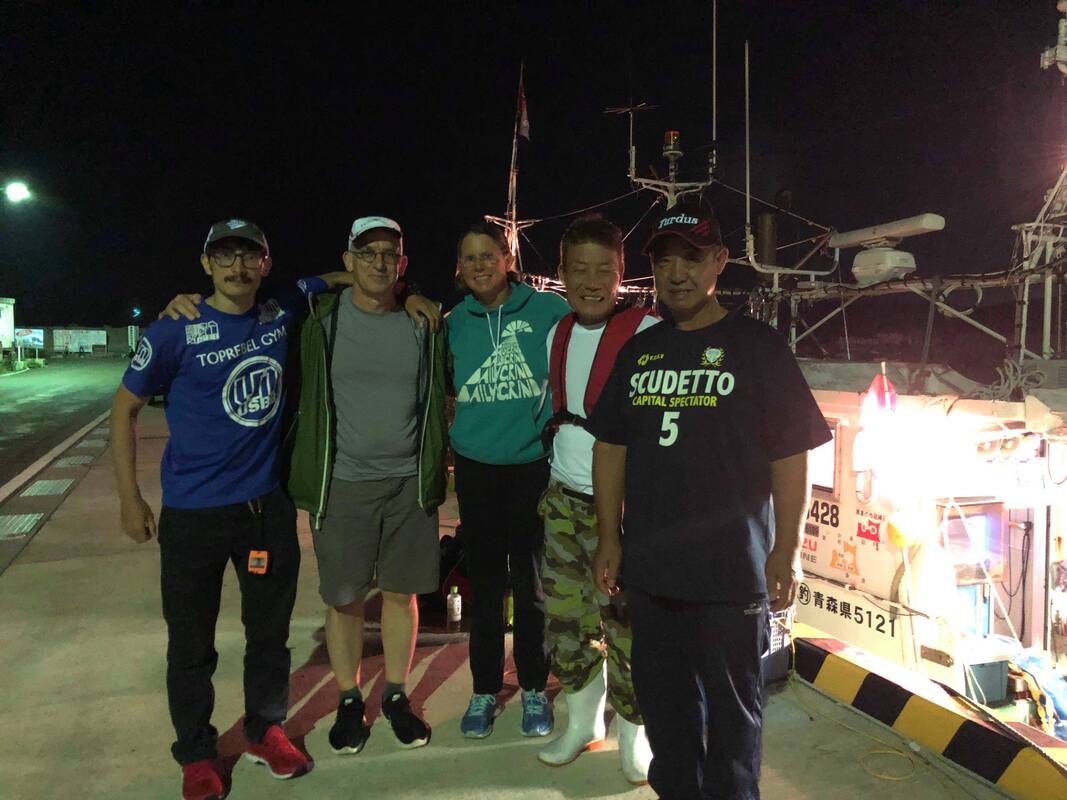
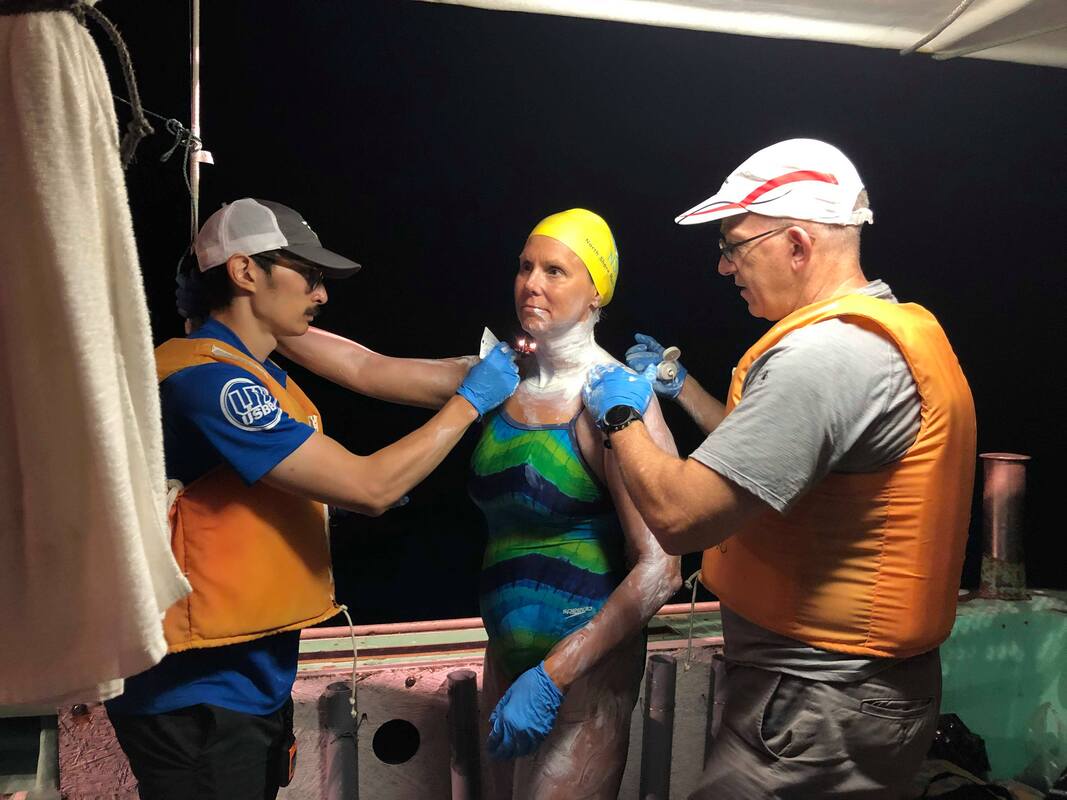
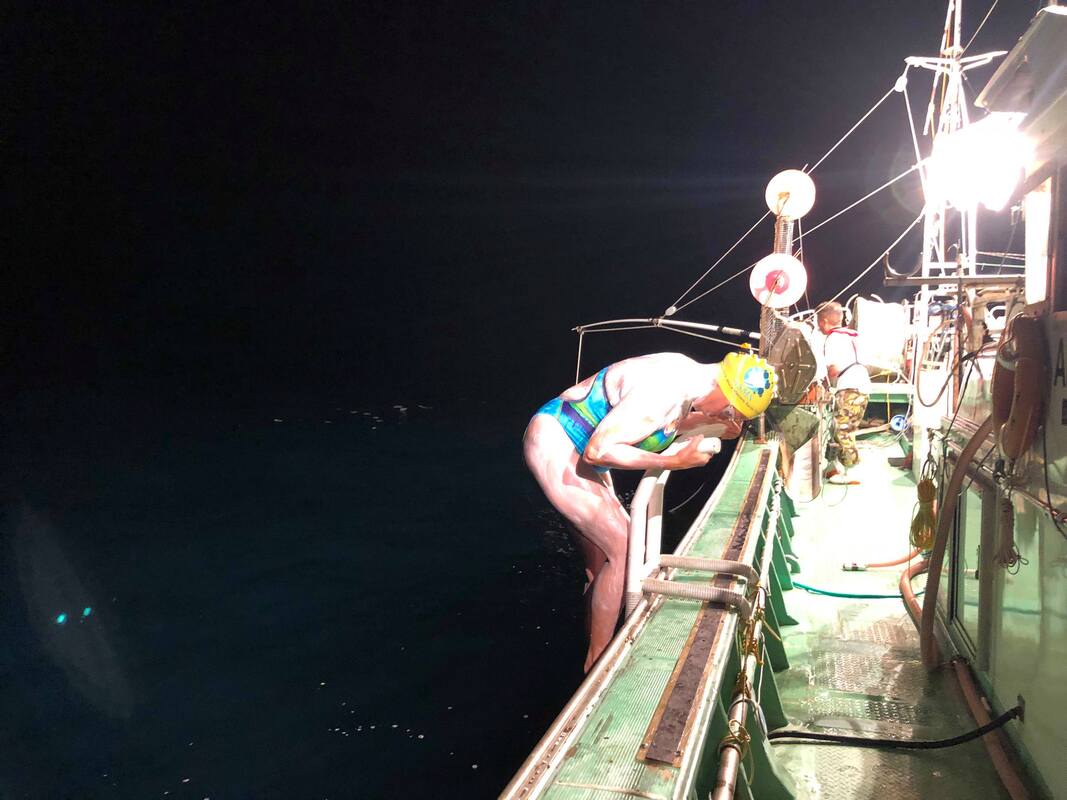
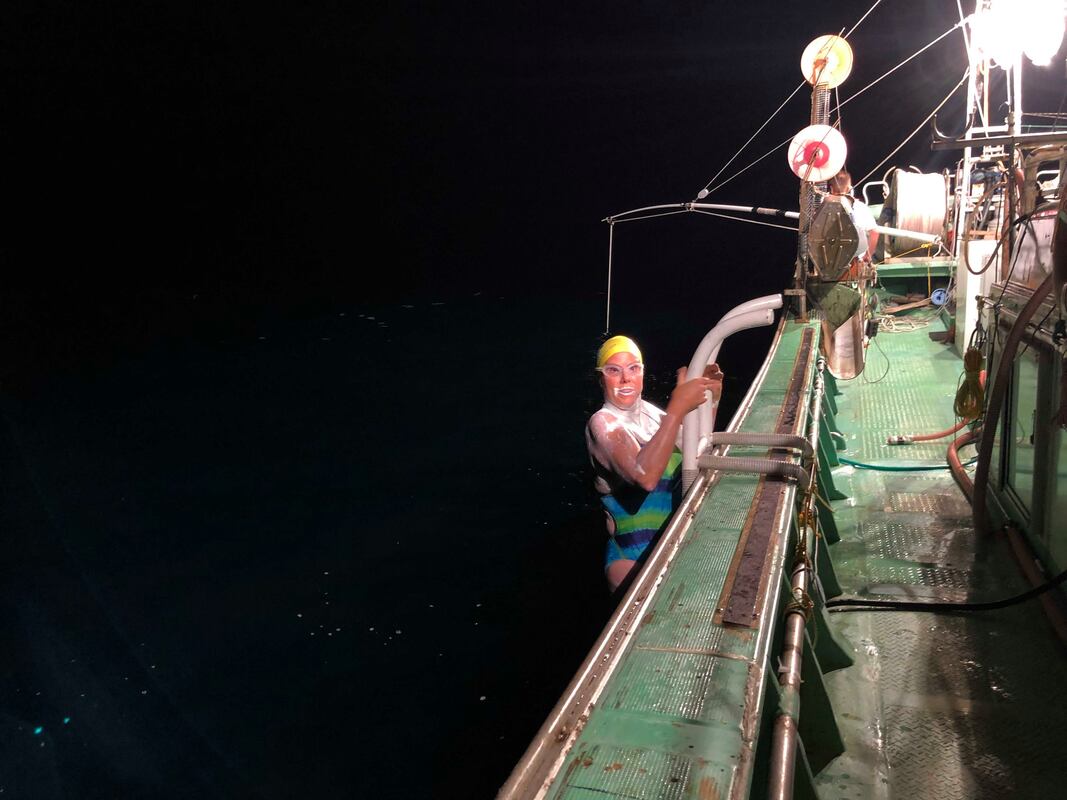
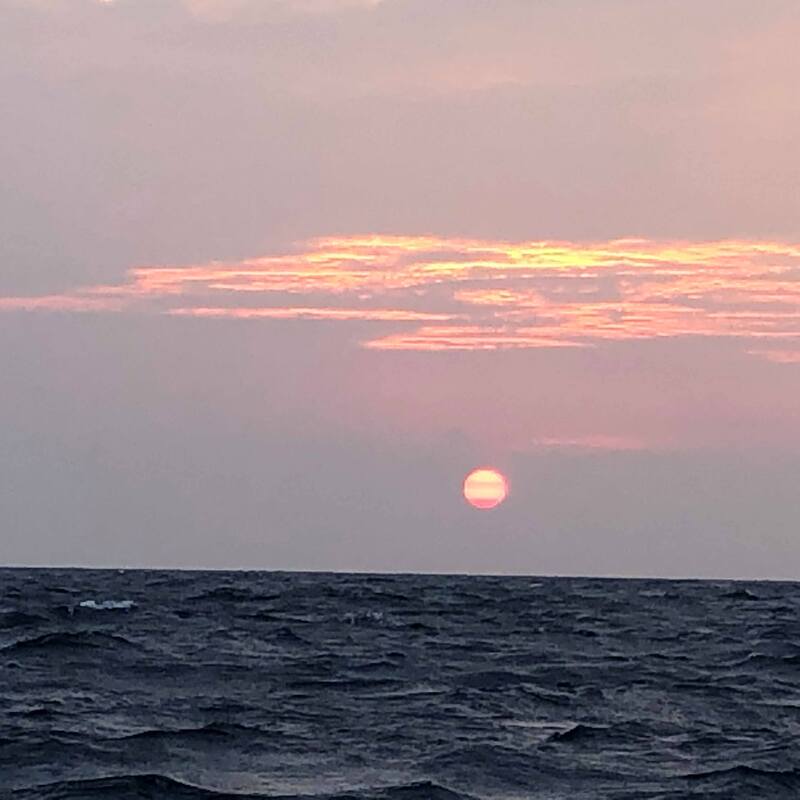
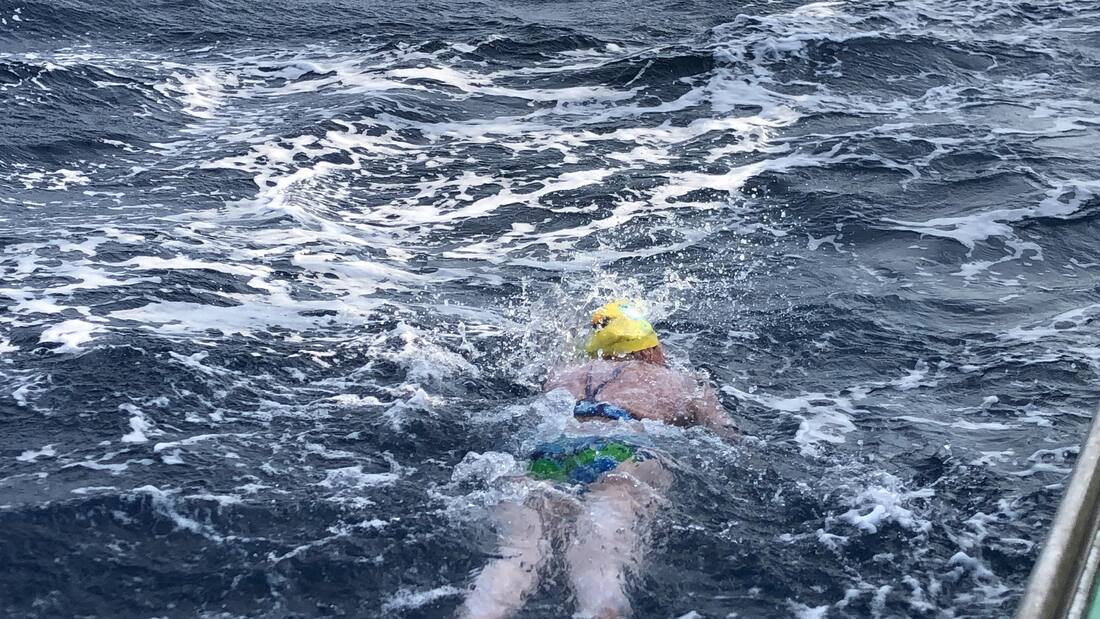
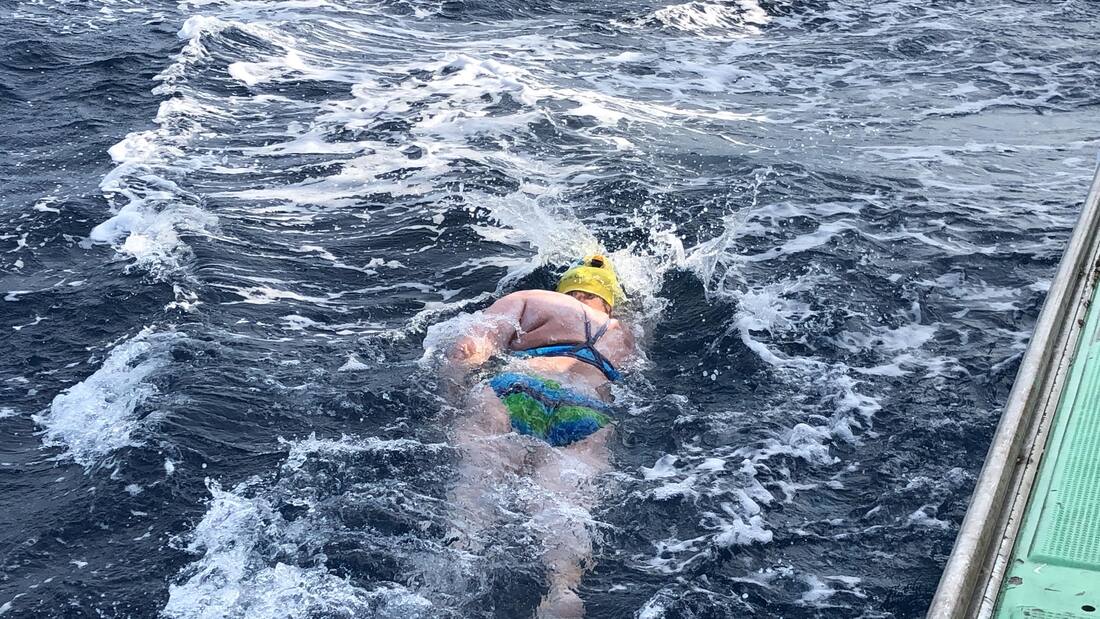
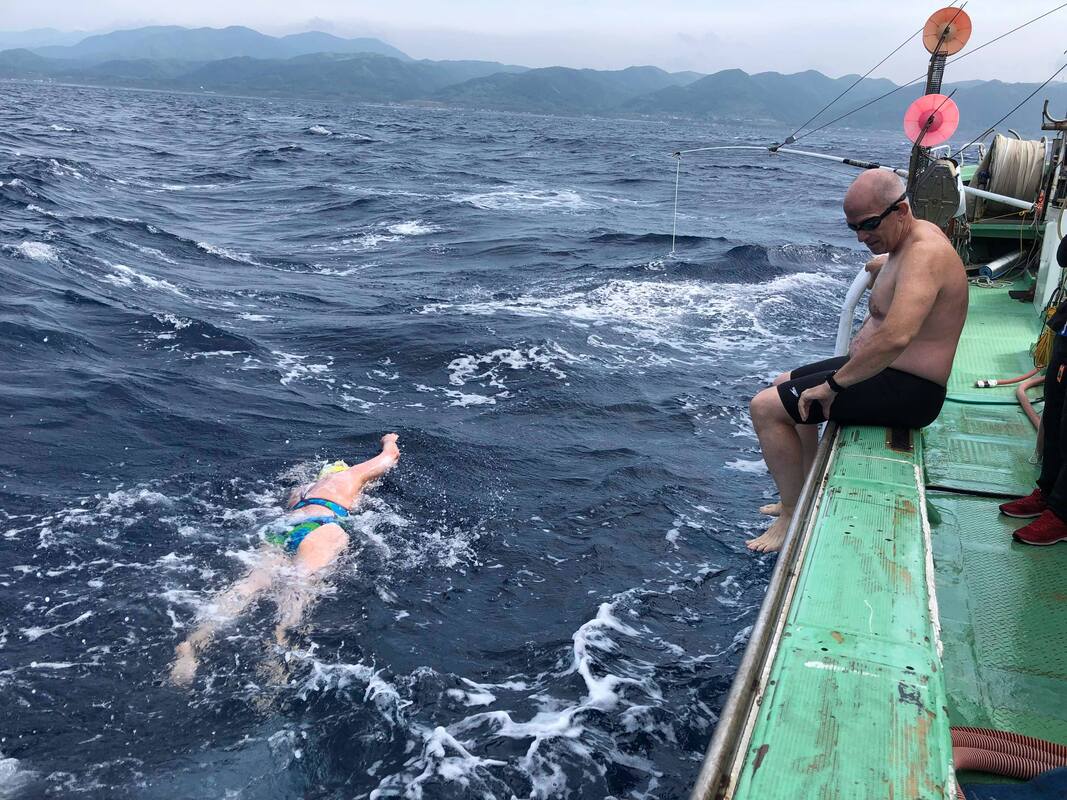
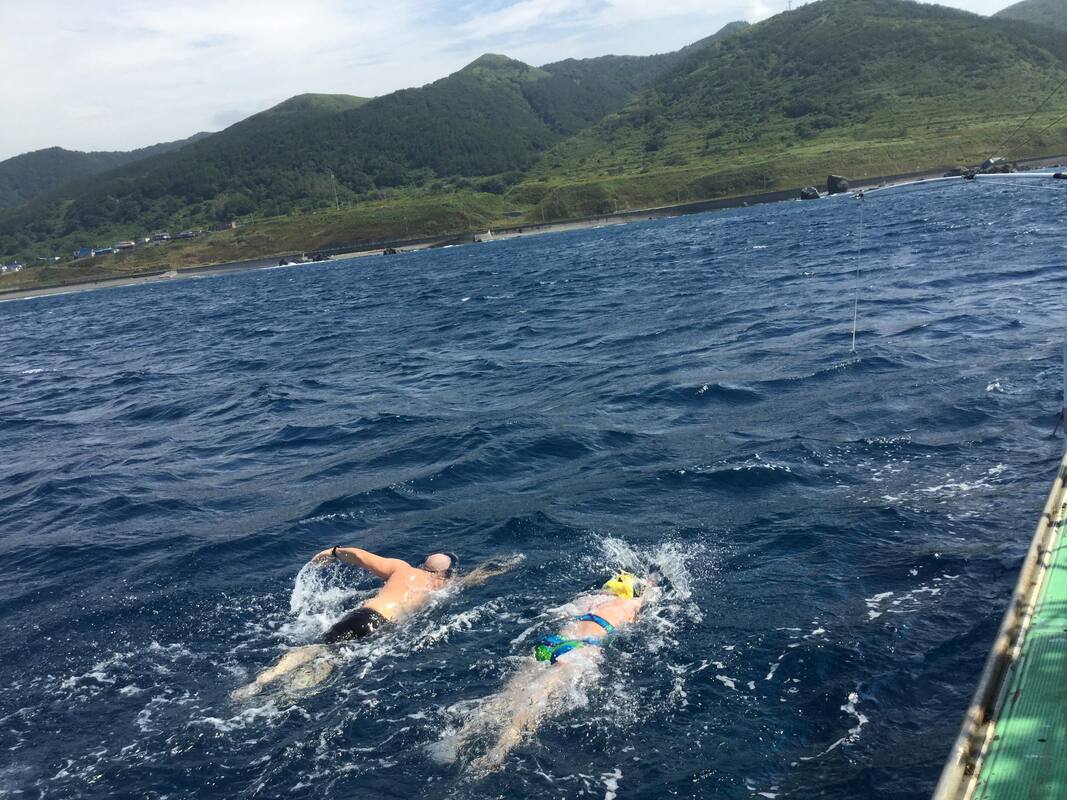
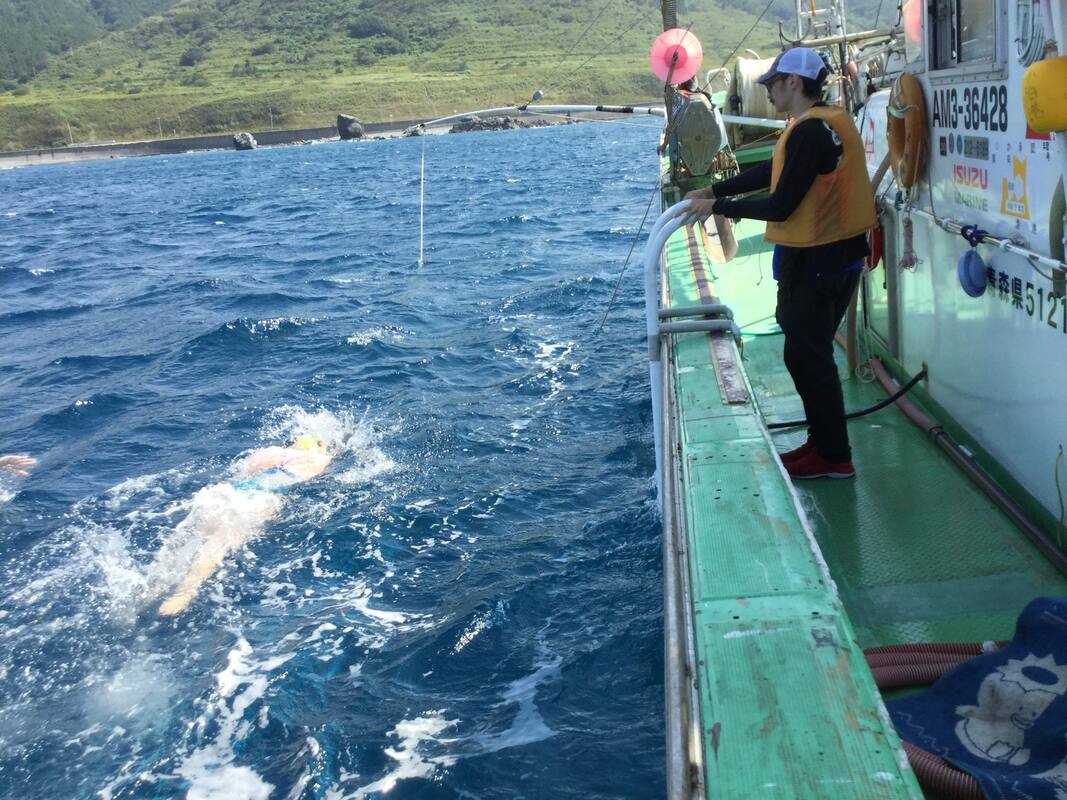
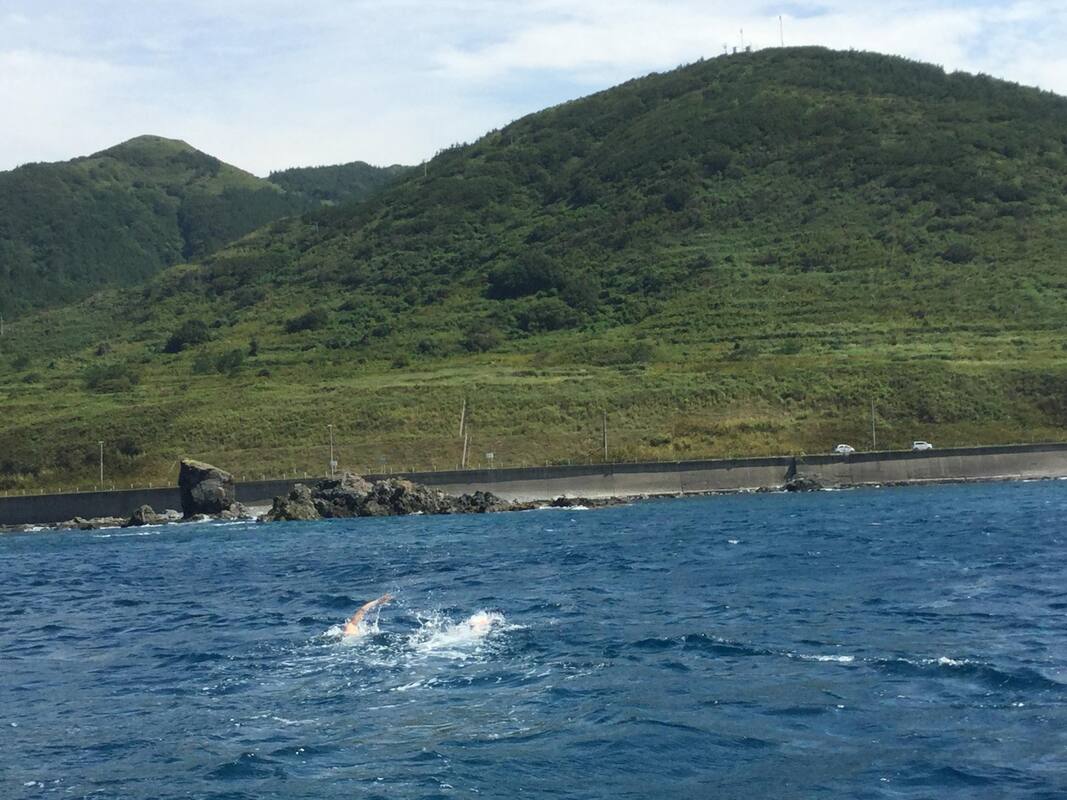
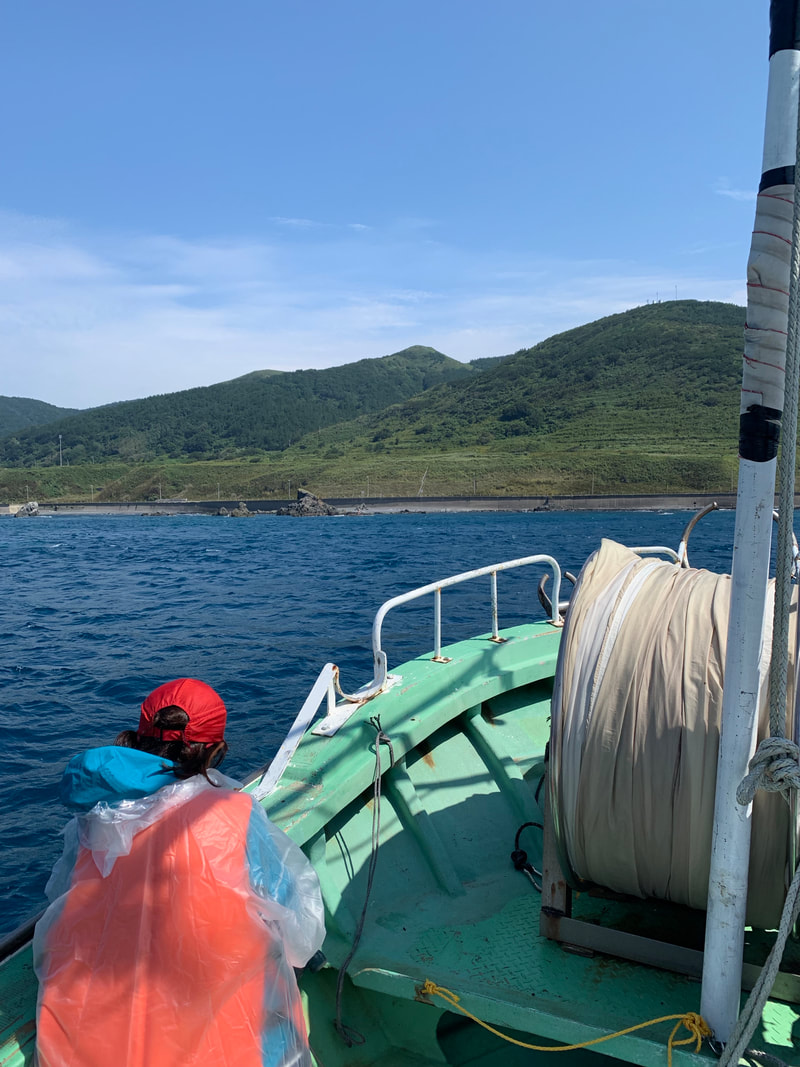
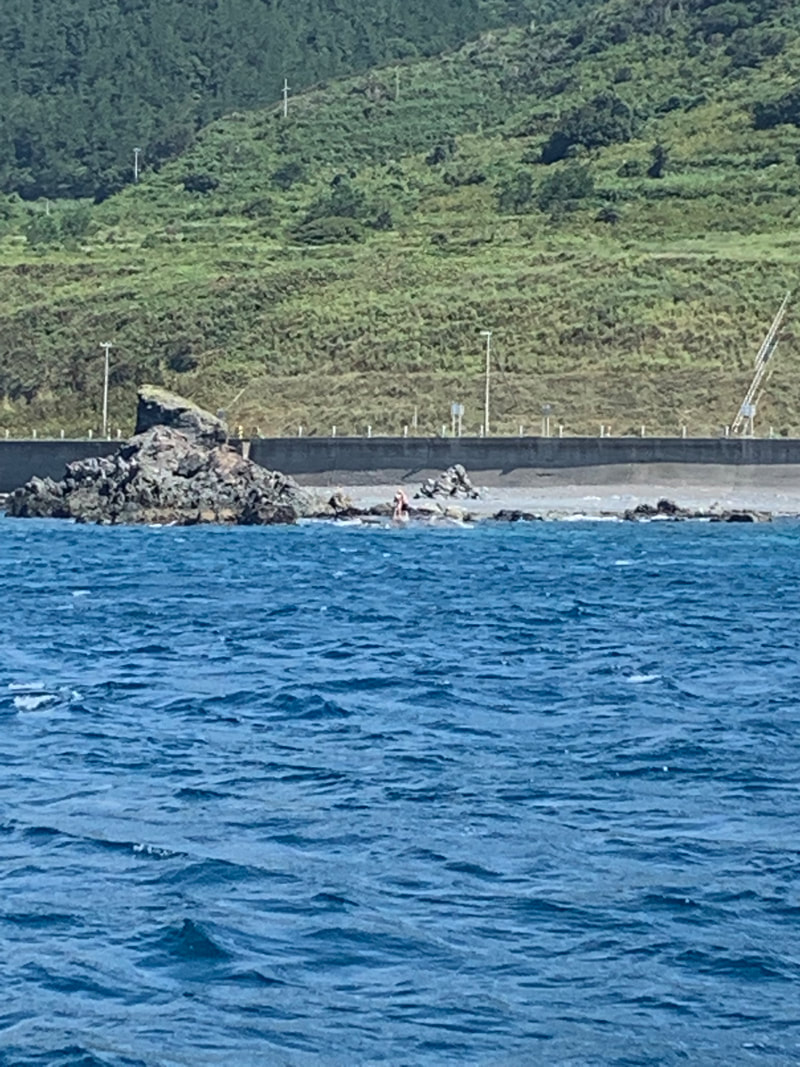
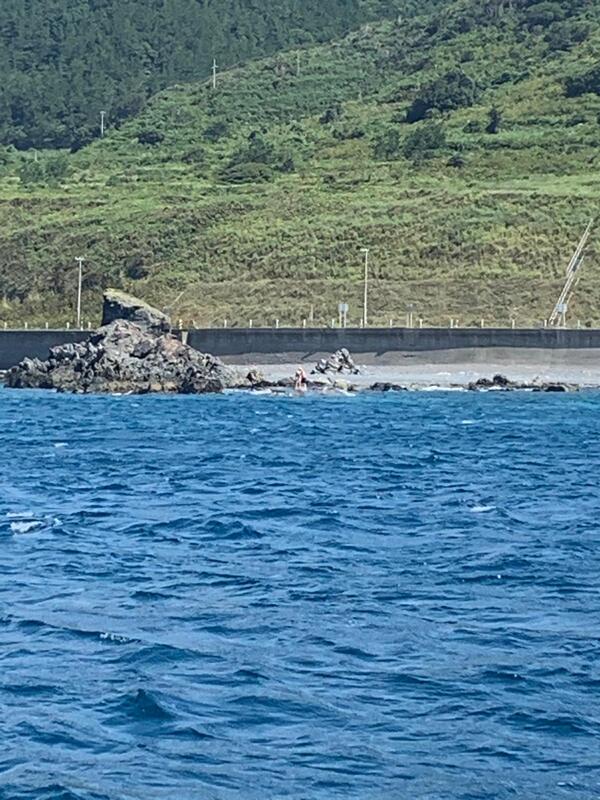
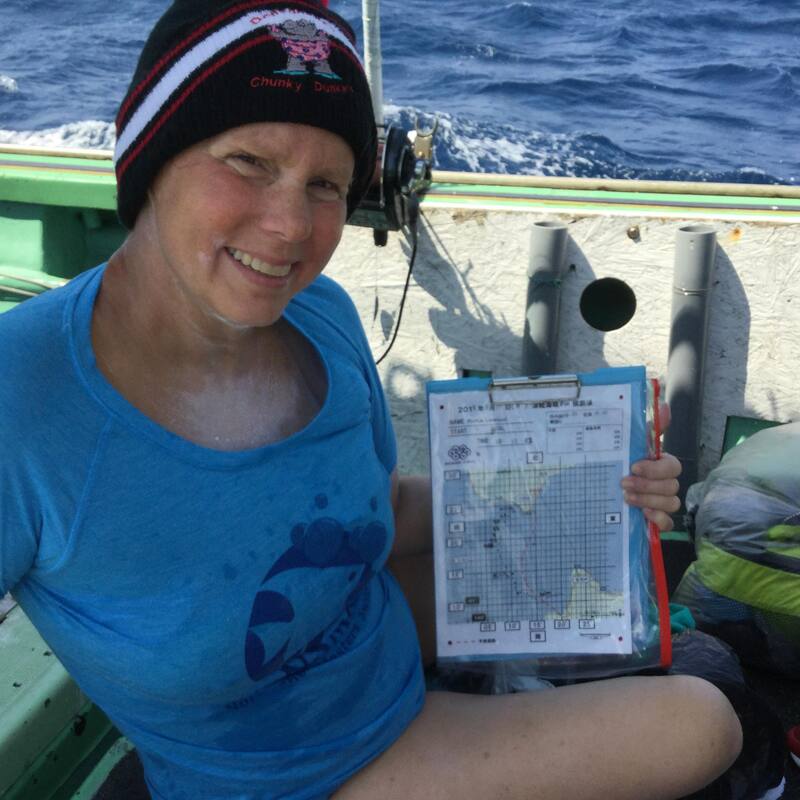
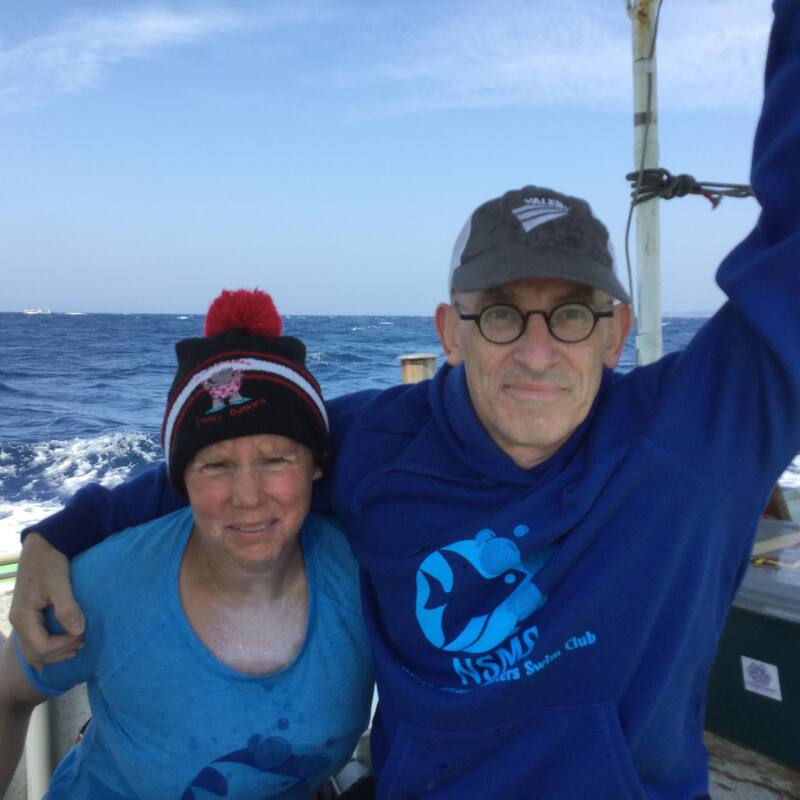
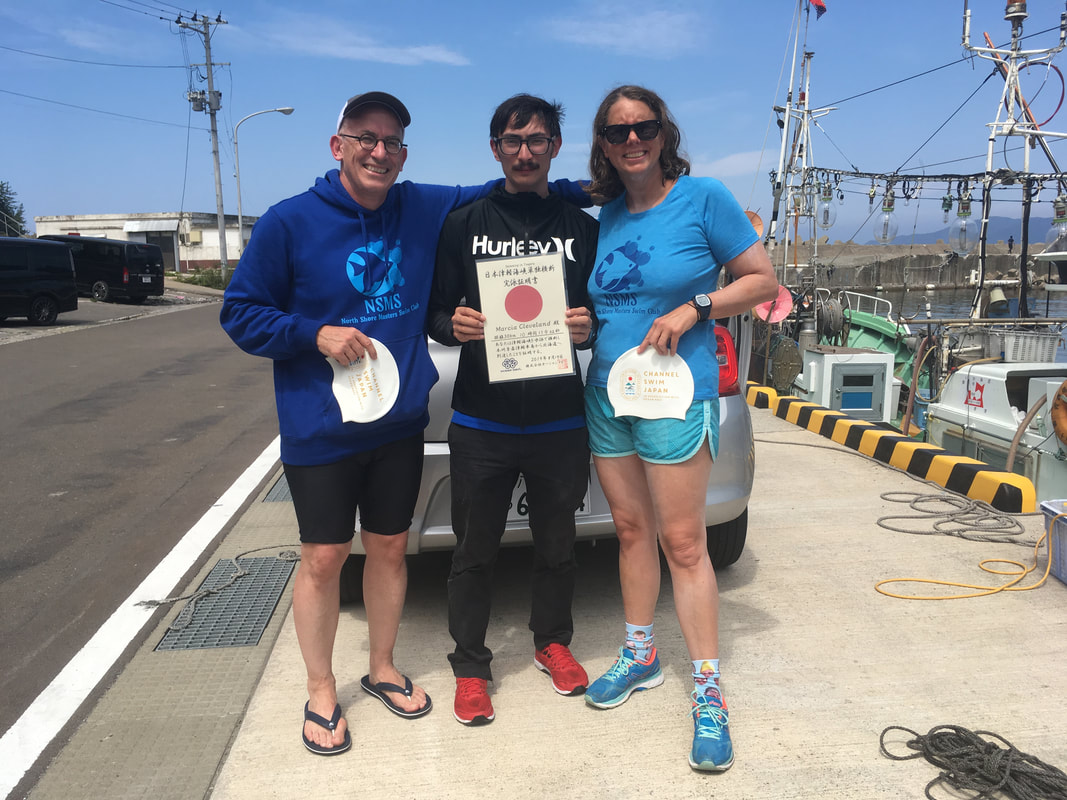
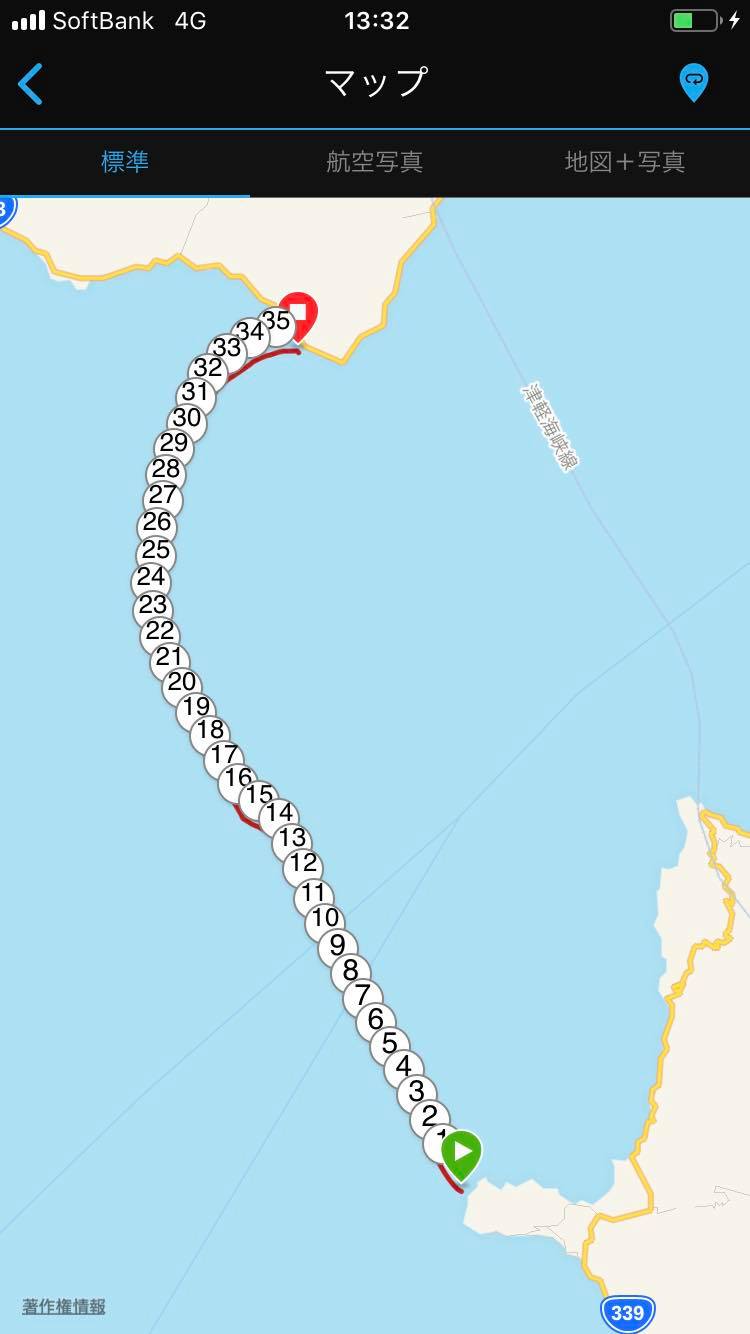
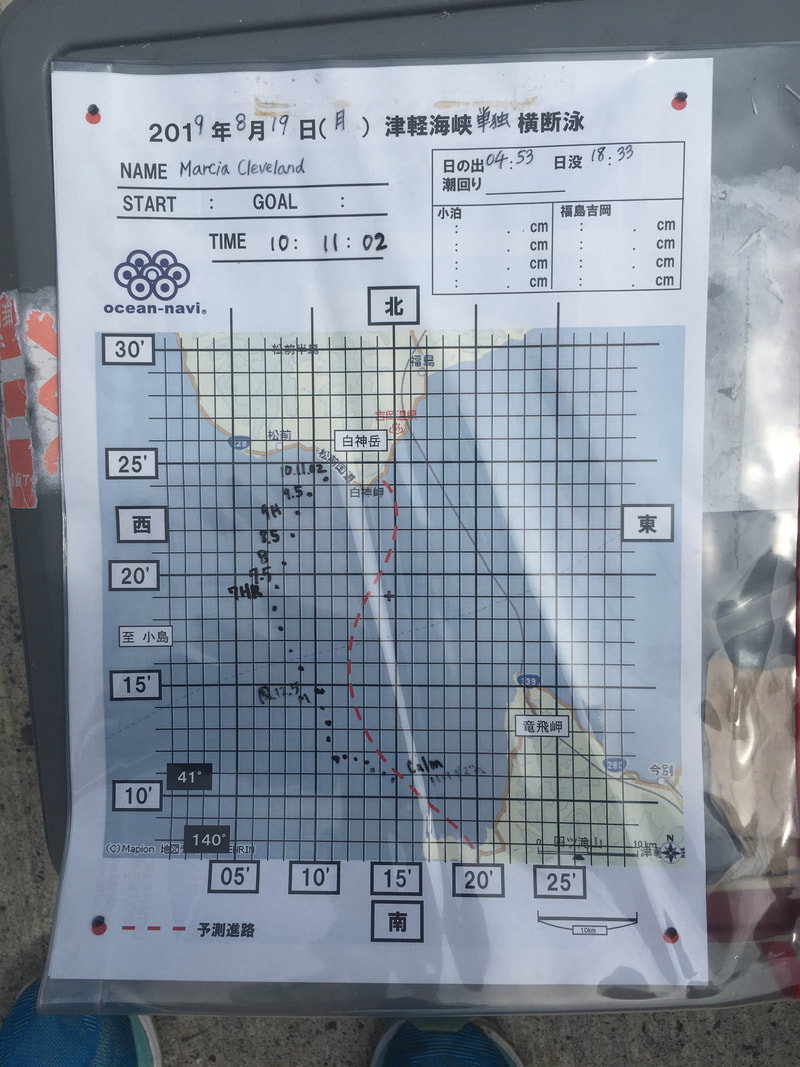
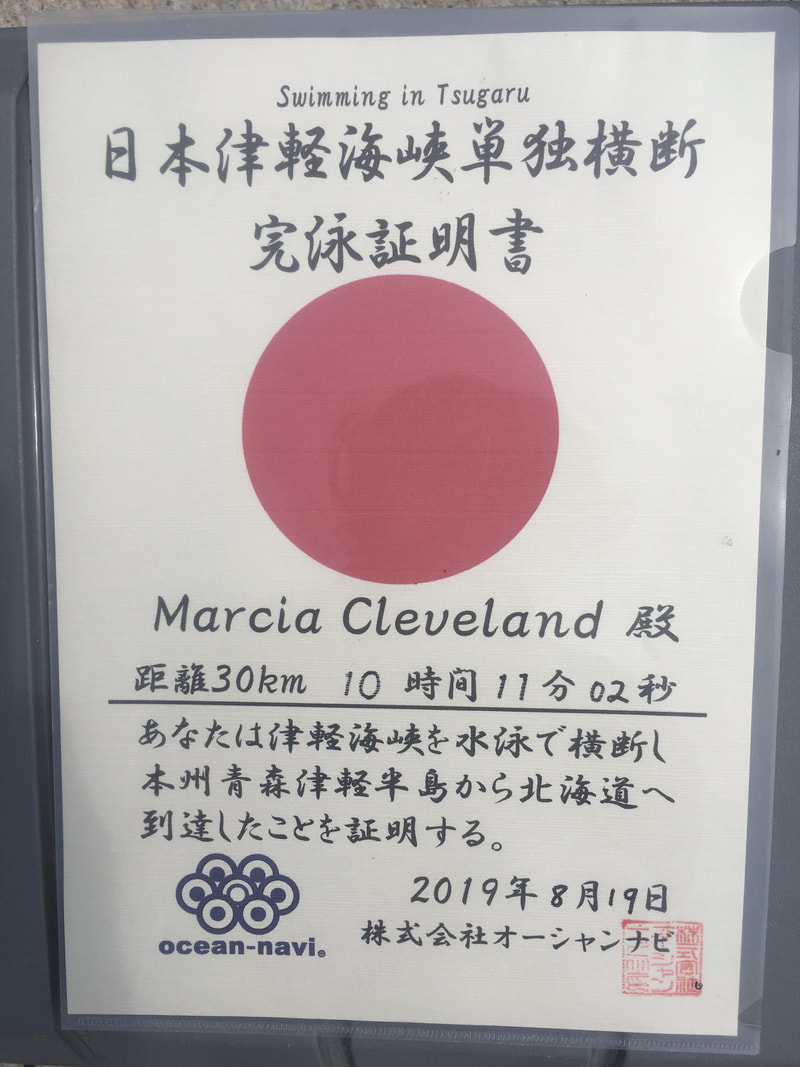
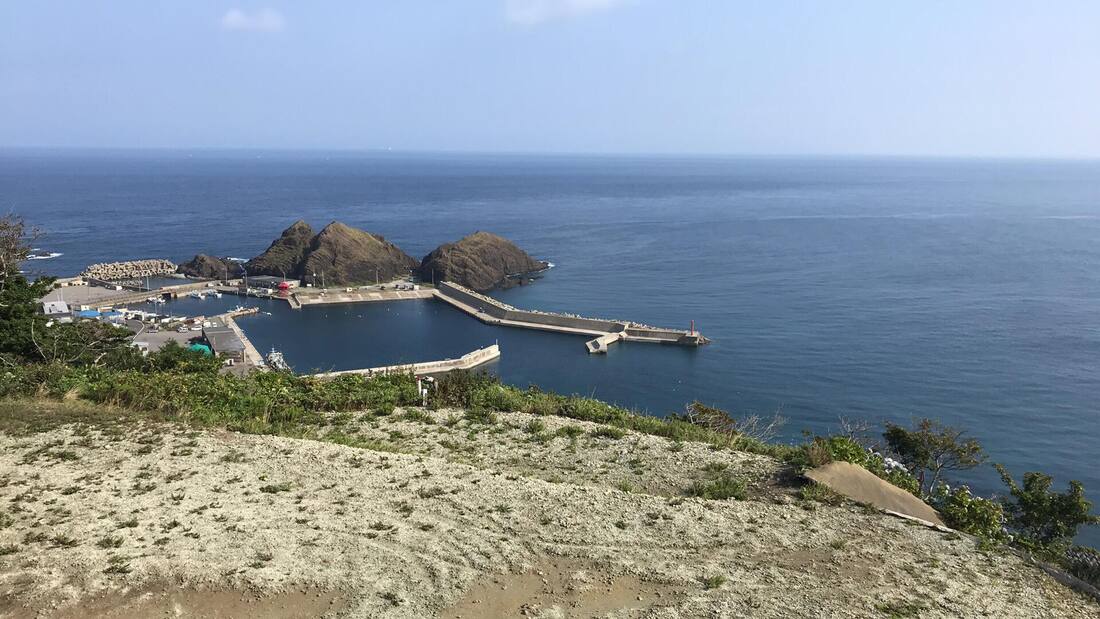
 RSS Feed
RSS Feed